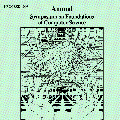We study the performance of voting mechanisms from a utilitarian standpoint, under the recently introduced framework of metric-distortion, offering new insights along three main lines. First, if $d$ represents the doubling dimension of the metric space, we show that the distortion of STV is $O(d \log \log m)$, where $m$ represents the number of candidates. For doubling metrics this implies an exponential improvement over the lower bound for general metrics, and as a special case it effectively answers a question left open by Skowron and Elkind (AAAI '17) regarding the distortion of STV under low-dimensional Euclidean spaces. More broadly, this constitutes the first nexus between the performance of any voting rule and the "intrinsic dimensionality" of the underlying metric space. We also establish a nearly-matching lower bound, refining the construction of Skowron and Elkind. Moreover, motivated by the efficiency of STV, we investigate whether natural learning rules can lead to low-distortion outcomes. Specifically, we introduce simple, deterministic and decentralized exploration/exploitation dynamics, and we show that they converge to a candidate with $O(1)$ distortion. Finally, driven by applications in facility location games, we consider several refinements and extensions of the standard metric-setting. Namely, we prove that the deterministic mechanism recently introduced by Gkatzelis, Halpern, and Shah (FOCS '20) attains the optimal distortion bound of $2$ under ultra-metrics, while it also comes close to our lower bound under distances satisfying approximate triangle inequalities.
翻译:我们从功利主义的角度研究投票机制的绩效,根据最近推出的计量扭曲框架(AAAI'17),从三大方面提供了新的见解。首先,如果美元代表了计量空间的翻倍维度,那么我们就会发现,STV的扭曲是O(d\log\log m)美元,而美元代表了候选人的数量。如果将数字扭曲从功利主义的角度来研究投票机制的绩效。如果将指标翻倍,这意味着比通用计量标准下限有指数的指数性改善,并且作为一个特殊案例,它有效地回答了Skowron和Elkind(AAAI'17)所留下的关于低度偏差空间下STV的扭曲问题。更广义地说,这是任何投票规则的绩效和基本计量空间的 " 精度维度维度 " 之间的第一个联系。我们还建立了近乎匹配的更低限约束,改进了Skowron和Elkin。此外,我们调查自然学习规则是否能导致低度扭曲的结果。具体地说,我们引入简单、确定和分散的深度探索/探索。更广泛地探索空间空间空间空间空间空间空间空间。更广泛地说,这构成了任何等级规则,我们最终的精度规则,我们最终的升级的升级,我们通过一个标准,最终的升级机制,让我们将一个标准的升级的升级的升级,最后将进入了。



